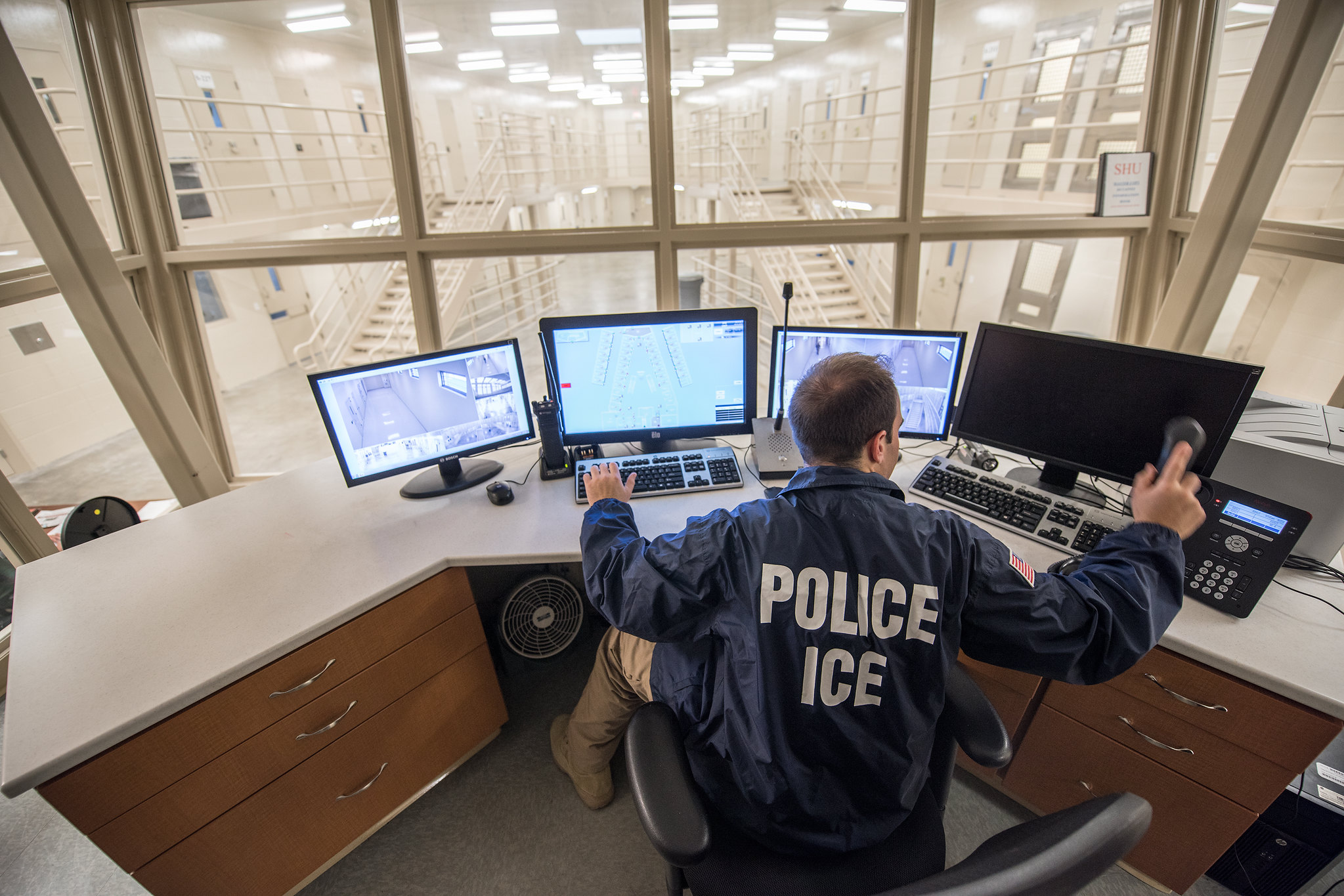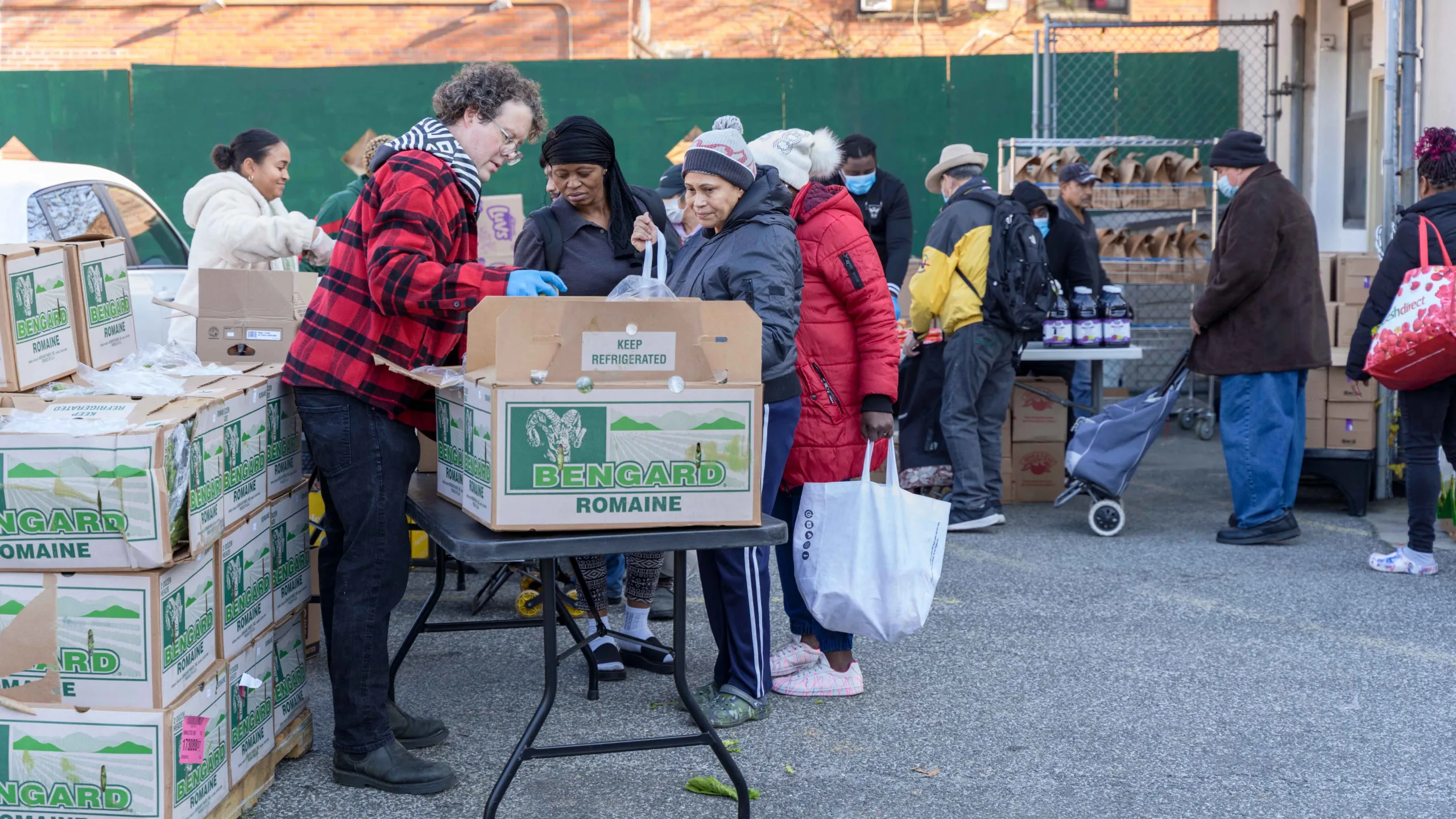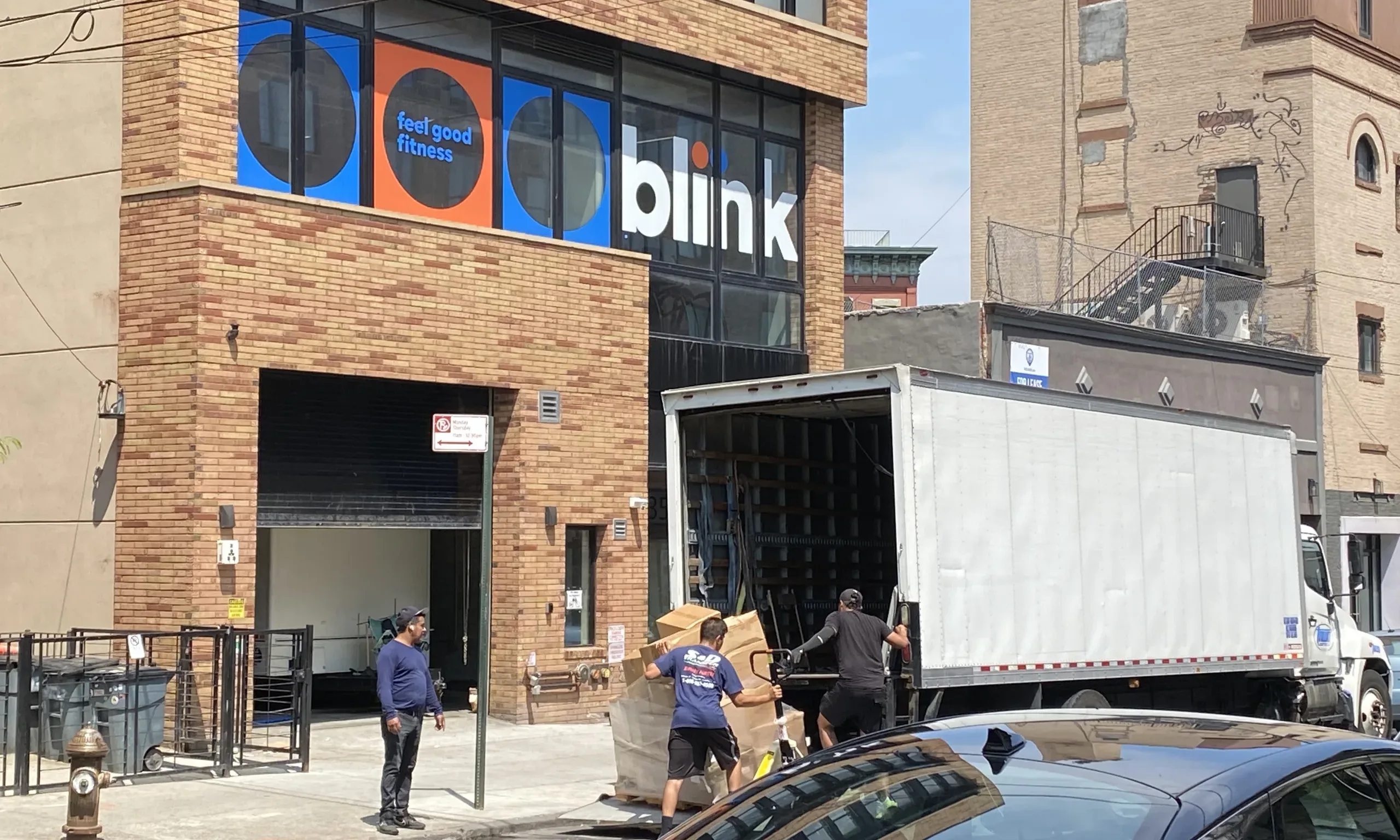Cristian Enmanuel Sánchez Martínez remembers standing at a rural gas station near Buffalo, New York, shivering and wondering when help would arrive. A winter storm was approaching and he had to make his way almost 1,300 miles away to Tampa, Florida, where relatives awaited.
It was essentially the first time Sánchez Martínez was in the United States outside of U.S. Immigration and Customs Enforcement Custody, and he had no idea how to make his way around. Wearing only a light jacket, without phone service, and struggling to understand or speak English, he and about seven other people recently released from the detention center roamed around the largely deserted gas station, pleading with strangers to lend a hand, he said.
“We felt sad, because we saw cars that were coming — but no one was helping us. They would just stare at us,” Sánchez Martínez, 29, said in an interview. “We felt uncomfortable. We felt cold, we were trembling.”
Thousands of migrants coming across the border in recent years, like Sánchez Martínez, have been sent to ICE facilities located far from their final destinations in the United States. When ICE detainees are released, they are left without enough resources to make it on their own, and communication between the agency and local groups that can provide aid is sparse, advocates say.
The situation — migrants stuck hundreds of miles away from friends and family, at the mercy of whatever help local aid groups can provide — can become perilous, particularly in the dead of winter.
Also Read: There Are No Immigrants Left in New Jersey County Jails. Where is ICE Sending Them?
Regardless of their final destination, migrants like Sánchez Martínez are sent to the Buffalo Service Processing Center in Batavia, New York, from across the country. “It’s kind of like this central housing point,” said John Peng, an immigration attorney with the Prisoners’ Legal Services of New York, who works with ICE detainees at Batavia.
Earlier that day, Sánchez Martínez said he and the other ICE detainees had boarded a van at the request of officials and were dropped off at the gas station. A local non-profit eventually paid for much of their food, lodging and tickets to their final destinations.
ICE released nine people from the Batavia facility on Feb. 2 to one of the “designated” bus stations, a spokesperson for the agency said.
The gas station, which advocates say is a Citgo less than a mile from the detention facility, also doubles as a Greyhound bus stop, but immigrant advocates note that it has various limitations.
In Batavia, the bus schedules at this specific stop are sparse, and Greyhound bus staff shortages have led to frequent cancellations, sometimes leaving released individuals stranded, said Jennifer Connor, executive director of Justice for Migrant Families of Western New York, the advocacy group that assisted Sánchez Martínez.
This drop-off practice is not just common in Batavia, advocates say, but has been prevalent across the country. ICE detainees released from custody have been dropped off at bus stops in Louisiana, Mississippi and Arizona, according to news reports from across the country, raising concern from advocates who say the responsibility falls on local organizations to help migrants reach their final stop.
On Feb. 2, Connor said, her group had to organize hotel rooms, transportation, and food for many of the released detainees. Sometimes, the organization has also had to provide proper winter clothing, advocates said.
An ICE spokesperson said in a statement that the individuals released on Feb. 2 were “able to purchase tickets and make travel arrangements with bus drivers at the location.” Those who were released had winter outerwear, and a small supply of food, the spokesperson said.
Also Read: A Man Detained in Batavia is Fighting to Be Deported. ICE Has Cancelled His Flight 13 Times.
But the gas station has recently been unable to sell bus tickets, a gas station employee told Documented over the phone. And on the Feb. 2 drop-off, when Sánchez Martínez was released, tickets weren’t being sold there either, Connor said.
In recent months, backlash against ICE release practices in Batavia has intensified as advocates say the number of people ICE released has reached about 20 individuals in one day, stretching the already-thin resources in a far-flung area of New York state, Connor said.
According to immigrant activists, when ICE detainees like Sánchez Martínez are left at the station with little direction or aid from officials, the burden falls on local attorneys and groups like Justice for Migrant Families to assist them.
“Over the years, ICE has continuously just dropped people off at that gas station and kind of said, ‘Okay, that’s the release and that’s the end of our responsibility,’” said Peng, of the Prisoners’ Legal Services of New York.
But ICE has repeatedly refuted the grim picture that advocates paint of the situation. In 2020, ICE claimed that the agency coordinated releases with family members and attorneys, and paid for the cost of transportation to any final destinations if individuals who are released cannot pay the cost themselves.
More recently in Dec. 2021, ICE said in a statement to a local news outlet that during a drop off, ICE told drivers to stay on site so that individuals who were released from ICE custody could had a warm place to wait until they were enter inside the business. ICE added that individuals were given “weather-appropriate clothing” and food before leaving the detention facility, and that the agency worked with local non-governmental organizations to help with other services, like flights and hotels.
And in a statement to Documented, a spokesperson for the agency again emphasized its work with local NGOs to assist those released, with aid including shelter, and said that “the coordination between ICE and the NGOs helps mitigate the strain placed on local community resources.”
After Justice for Migrant Families began posting on social media denouncing the release process, Connor noticed that ICE “publicly changed their practices,” she said. On one occasion, she said, officers drove a group to the Buffalo bus station — a busier transportation hub about 40 miles from the Batavia detention center. Officials have also given individuals bagged lunches. And for a while, Connor said, some people had their tickets, information, travel plans, and everyone was released with winter coats.
Additionally, Connor said, the agency has sometimes tried to coordinate with her organization for transportation needs.
But soon, the agency seemed to have lapsed back into old patterns, Connor said. “I feel like they think people stopped paying attention,” she said about ICE. “We’ve had to regularly fill in the gaps.”
No Coats, No Connection
On Feb. 2, Sánchez Martínez and others were left at the gas station, some having not eaten since the day before, according to Connor. The temperature that day in Batavia reached a low of 34 degrees. Many of those released did not have functioning phones and had only limited amounts of cash, she said. Most did not speak English. They were traveling to states as far away as Florida and California.
Also Read: Two Years After ICE Shoots Unarmed Man, His Family Still Waits for Justice
As morning bled into afternoon on Feb. 2, Sánchez Martínez scoured the gas station for help, and was finally pointed to a nearby hotel, where the organization dispatched a volunteer and prepared to aid the newly released migrants.
“If you don’t know how, or you don’t think about picking up the phone, or going to a hotel and asking for a translator and expressing what you need, then — you can’t do anything. You’re just at the mercy of God’s will,” Sánchez Martínez said.
Sánchez Martínez came to the United States last year and still has a wife and two children back home in Nicaragua. He arrived in Batavia towards the end of October after crossing the Southern border into Eagle Pass, Texas through the Mexican border city of Piedras Negras, and was processed by immigration officials.
Sánchez Martínez was then transferred to Houston where he was held for a few days, he said. But he was soon flown approximately 1,500 miles away to the detention center in Batavia where he remained for more than three months until he was released. His final destination, he said, had always been Tampa, where some of his family lived.
He said he was grateful to be released and eager to get back to work, because his family back home was relying on him economically. “I was worried because maybe my family wasn’t eating, I didn’t know what was going on with them,” he said.
But the experience of being released from detention ended up adding additional stressors to his passage towards Florida. “On top of everything, they just leave you there at the gas station, and you have to figure things out,” Sánchez Martínez said. And still, even after the Justice for Migrant Families arrived to his aid, the nightmarish journey continued.
From the Border to Batavia
Many of the individuals currently detained at Batavia are asylum seekers who, like Sánchez Martínez, have been transferred from the Southwest border, said Connor. In Batavia, migrants who have been transferred from the Southwest may be held in detention anywhere from a few weeks to several months, she said.
Then, many are paroled, a temporary status allowing them to remain in the country at ICE’s discretion, said Peng, the attorney from Prisoners’ Legal Service of New York. But the parole is conditional, and requires that ICE detainees attend ICE check-ins and go to immigration court, Peng said.
Arranging travel has been a main concern, Connor said, particularly for the released immigrants who are looking to reach places far from New York. And following the Feb. 2nd release — in addition to the various other logistical difficulties — a handful of the released ICE detainees were not given the proper identification they needed to board a plane and travel across the country, advocates said.
Also Read: The Yonkers Police Department Is Refusing to Help a Stabbing Victim Get a Visa
“ICE released them without any documents that would permit them to travel easily,” Connor said. “This is the first time that we’ve had people with no travel documents.”
Gary Rizzo, a volunteer with Justice for Migrant Families, accompanied Sánchez Martínez and three other individuals to the Buffalo Niagara Airport to assist them in boarding their flights. Rizzo had gone through the process various times before, he said in an interview with Documented. But this time, “things really fell apart,” he said.
Usually, ICE officials at the Batavia facility provide individuals with a DHS Form I-862, Rizzo said, which is called a ‘Notice to Appear’ and shows that the government has started removal proceedings against that individual.
The Transportation Security Administration accepts the form as one of the documents that allows non-citizens to clear airport checkpoints if an individual does not have other proper identification, according to a Jan. 7 letter from TSA. The letter was addressed to Rep. Lance Gooden, Republican of Texas, after the Congressmen asked for clarification of TSA policies and procedures for “protecting the Nation’s transportation systems and mitigating national security risks,” the letter said.
But as they attempted to board flights in early February, the DHS Form I-862 form was nowhere to be found among the stack of documents Sánchez Martínez and some of his fellow travelers were holding, Rizzo said.
“So I’m frantically going through their documents,” Rizzo said. “It was disbelief on my part and feeling very helpless.”
When Sánchez Martínez arrived at the airport with Rizzo a few days after his release to board a flight to Florida, which Justice for Migrant Families had purchased for him, he was only holding the documents ICE had given him upon his release. But the papers he was clutching couldn’t help him get on his flight.
“We realized we were never going to make it past [security] because the document we needed didn’t exist,” Sánchez Martínez said. “We wanted to get out of there quickly and get to our destinations, to get to the places where the family members and people were waiting to receive every single one of us.”
In the end, Sánchez Martínez was unable to board the flight due to the missing identification, according to his own account and that of Justice for Migrant Families.
“I don’t know anything about this country,” Sánchez Martínez said. “You’re really confused. You don’t know where to go, what to do.”
A press secretary for TSA said that the agency did not have the “data or information” sought by Documented, and deferred questions to ICE. ICE deferred any questions about travel documents to the TSA.
Long Journey for ICE Detainees
After the botched attempt to board a plane, Sánchez Martínez’s next option, though not a desirable one, was to take a bus to Tampa. On Feb. 5 he boarded a bus in Buffalo and made his way to Florida.
At every new terminal, he would connect his phone to WiFi, which was the only way he could get service, and pull up a translator to ask people around him where and when he needed to board his next bus. He munched on vending machine snacks and water with the cash he had saved for the journey, he said.
TestPost3
Sánchez Martínez spent two days straight traveling throughout the country, through full days and nights, on various buses with multiple transfers. He rode buses through six states, from New York, through Ohio, Kentucky, Tennessee and Georgia, before finally arriving in Florida.
“You get stressed, because you don’t know the area, you don’t understand the language, and so it’s really complicated,” he said.
Sánchez Martínez is now staying at a relative’s house awaiting information about his immigration court date, and he plans to pursue an asylum claim.
He arrived in Tampa on the afternoon of Feb. 7, five days after he was released from detention. “I was so happy, because I had finally arrived where I needed to be,” Sánchez Martínez said. “I had never been a prisoner, I had never been detained,” he said. “The truth is, it’s very hard, I don’t wish these things upon anyone.”












